If you are a retail brand that hasn’t made your products available online yet, you’re not alone. In fact, as many as 1 in 4 small retailers in the United States didn’t have a website in 2021, according to Digital.com. A third claim that they don’t need one, even after the pandemic pushed 12,200 American brick-and-mortar stores to close. And the threat isn’t over: 59% of small retailers say they’re at risk of shutting down by this fall.
High-ticket verticals such as jewelry may be wary of establishing an online shop because of the specialized shopping experience that their brick-and-mortar stores provide. Not going digital, however, can be a huge missed opportunity. In 2021, over 2.14 billion people worldwide bought goods and services online. For jewelry, in-person shopping is still a popular path to purchase for US consumers, but online purchases are quickly catching up at 69%. The reasons to establish an eCommerce presence are more vital than ever.
So how can jewelry retailers excel in the eCommerce ecosystem, despite the complexities unique to their industry? These can include the difficulty in accurately describing jewelry styles and features, making product discovery challenging. Also, many jewelry items are quite expensive, and shoppers are accustomed to handling the pieces in person before making a big purchasing decision. With the great leaps of technology just in the past few years, there are now various ways to address these issues that are unique to the jewelry vertical, helping to narrow the gap between online and offline.
If you’re a jeweler looking to create your online store, or seeking to refine your digital presence and offer your customers the most optimized online shopping experience, read on. We’ll cover the basics, including the benefits of going digital and tips for growing your business. We’ll also feature some of the best brand examples for inspiration and briefly touch on what the future looks like for jewelry eCommerce.
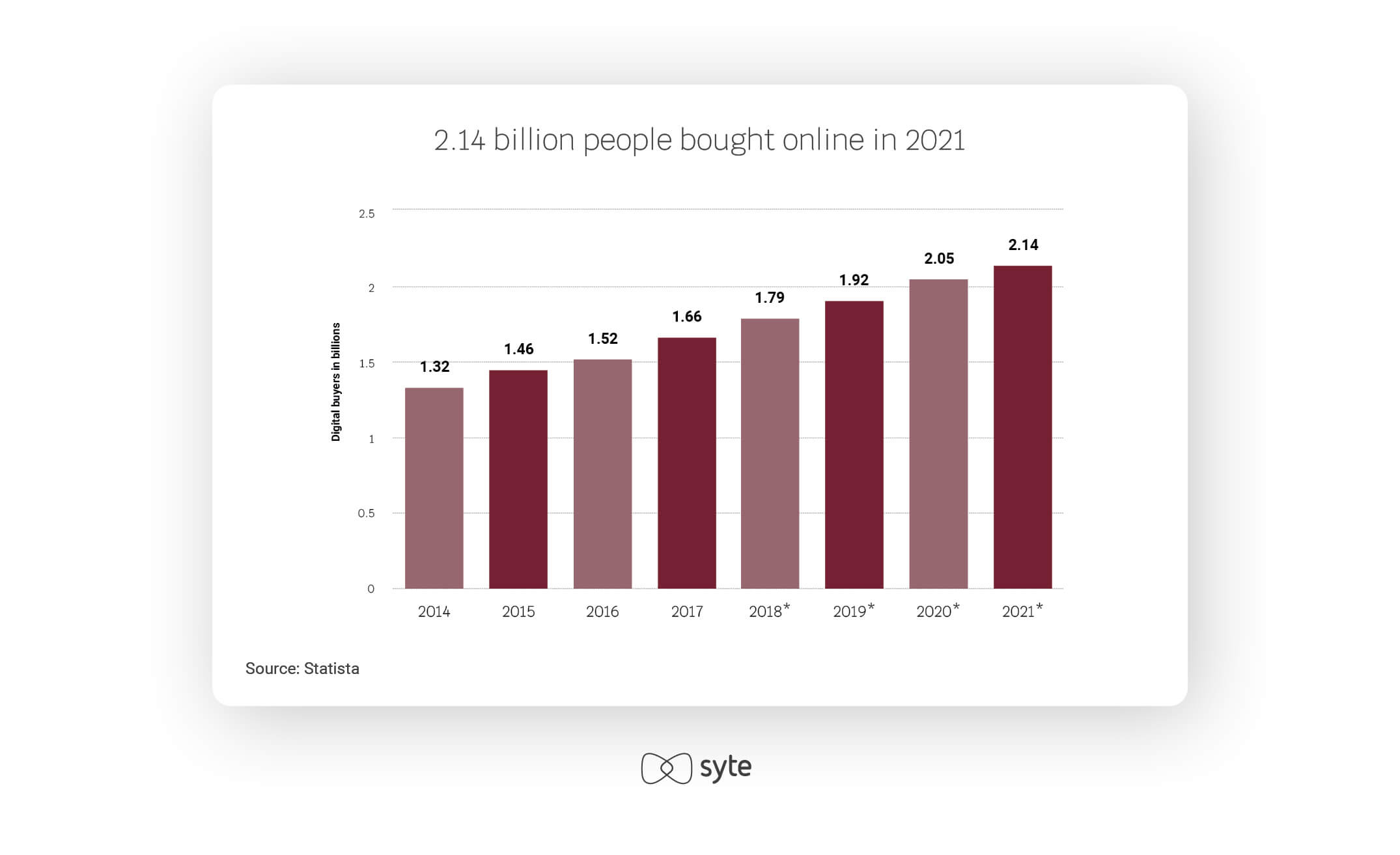
Hard Luxury Goods in Numbers
People are predisposed to like beautiful things, which is why jewelry remains a timeless purchase. In 2020, jewelry was a $228 billion global industry projected to grow to $307 billion by 2026. Last year, the luxury jewelry market was valued at $22 billion worldwide. The eCommerce numbers are promising, with the online jewelry market amounting to $21.5 billion in 2020. In seven years, the share is expected to increase almost threefold to $60 billion.
The COVID-19 pandemic and its accompanying restrictions on international travel were instrumental in the slowing down of demand across the jewelry industry, compared to pre-2020 numbers. McKinsey estimates that the fine jewelry industry suffered a 10-15% decline in revenue. The future seems bright, however — both Business of Fashion and McKinsey expect the numbers to bounce back in the coming years. The fine jewelry market should grow 3-4% per year, owing to the increasing purchasing power of younger shoppers and the growing demand in global markets, particularly in Asia. Experts anticipate the sale of branded jewelry in the region to grow to 10-14% annually, with China leading the way, followed by India.
This expected growth will be powered by digital sales as well as brands that identify as sustainable. With higher price points and the internet leveling the field, the competition will be tougher for heritage brands as well as for newer, independent players. Brands that succeed in fostering relationships with their customers online will gain more avenues to attract, engage, and win shoppers.
Consumers will be moved to purchase over the next few months, experts predict, by a few different motivators. Sustainability may be one of the most prominent movers of the needle. Business of Fashion estimates that those who buy due to sustainability reasons will more than triple in the coming years, putting pressure on brands to produce one-of-a-kind pieces while also conserving natural resources.

The eCommerce Advantage: Benefits to Selling Jewelry Online
The process of buying fine jewelry often carries a lot of emotional weight, from the search for the perfect piece to the actual purchase to the method and style of delivery to its intended owner. On the surface, jewelry and eCommerce might not seem to align. In general, shoppers prefer going to physical retail stores because of the guarantee of professional consultation and assistance. There’s also the reassurance of being able to handle and examine precious stones and materials.
With the pace of technological developments accelerated by the global pandemic, however, it’s hard to deny — eCommerce is gaining traction, now and for the foreseeable future. There are countless reasons for brands to join the digital world and establish their online jewelry stores. Here are some of the most compelling:
Expanding Online Jewelry Industry
The industry in general has been slow to transition to online. Before the pandemic, the revenue share from online jewelry stores was a mere 13%. But in 2020, when overall demand shifted from physical to digital, brands and retailers soon followed. US and European markets reflected a 57% increase in online sales of fine jewelry and a 35% rise in the average unit value.
With such promising performance, the compound annual growth rate (CAGR) of fine jewelry’s online sales is predicted to grow to 9-12%, which is already more than three times the CAGR of the jewelry industry. Established brands are expected to take the biggest share, particularly through their websites. Data from Agility shows that wealthy customers prefer to shop directly from their preferred brand’s website, but online marketplaces and small-scale jewelers should still score a significant share of industry sales.
Adapt to Different Shopper Habits
Consumers today have become more comfortable with online shopping. More than half of American consumers now prefer buying digitally to going in-store, according to Raydiant. While shoppers may now feel safer shopping in person again, they also realize the many benefits of buying jewelry online. In addition to speed and convenience, eCommerce has made it easier for shoppers to see a larger selection at once, compare prices among retailers, and read reviews from other customers before purchasing.
Easier to Reach New Global Customers
eCommerce jewelry stores benefit from a connected world. Having a physical jewelry boutique before means that sales are limited to locals and shoppers traveling within the area. Online, jewelers gain access to billions of shoppers the moment the website goes live. It’s possible to market to other countries, profit from additional regions, and speed up the growth of the business.
For jewelry brands, Asia is a region to watch. Jewelry purchases have boomed in the continent, particularly in China, which is now seen as a major luxury market. The region currently is responsible for 45% of all branded fine jewelry sales.
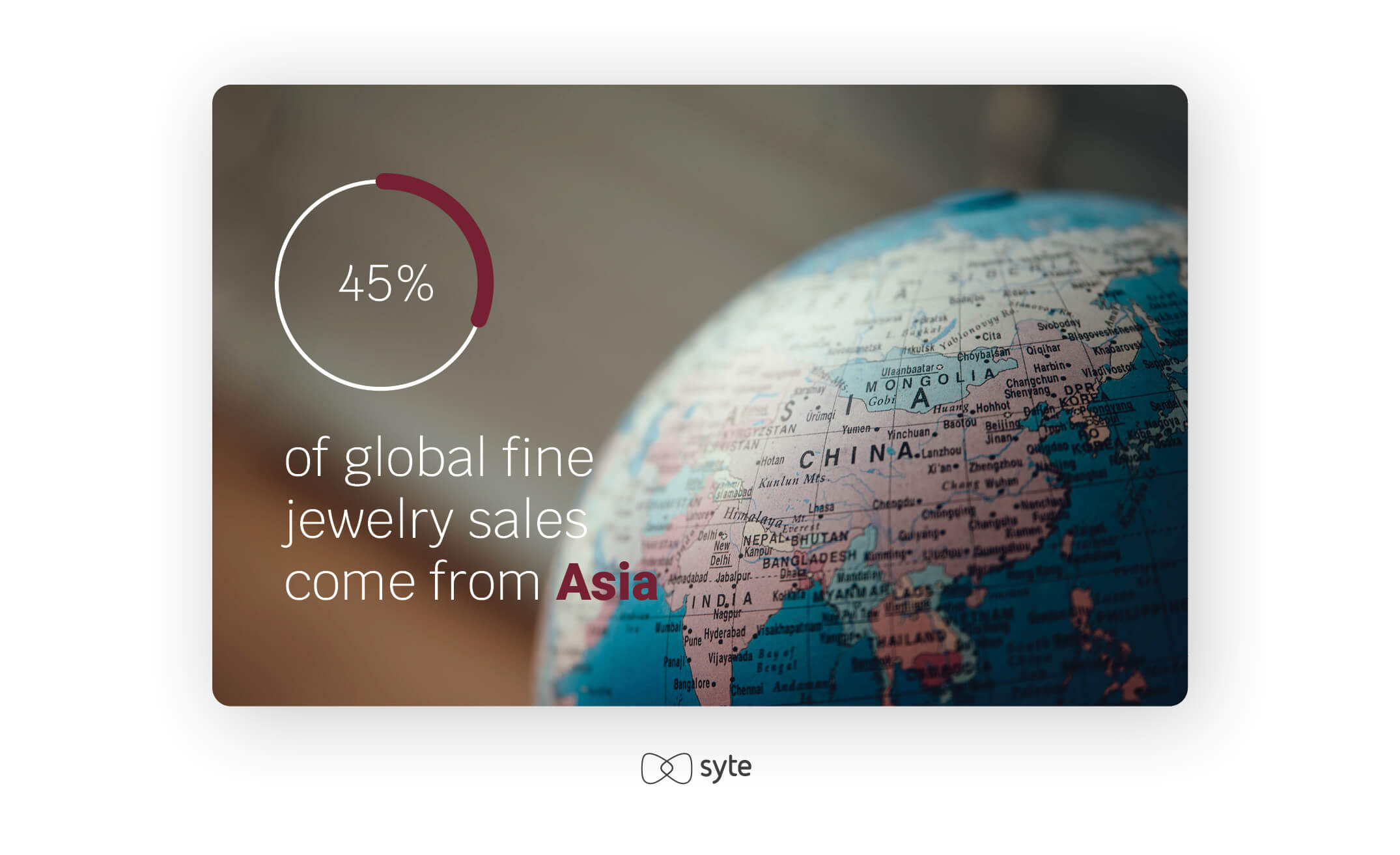
Improved Brand Visibility and Awareness
For many customers, the shopping journey begins online. Users often head to the internet first for research purposes; 59% of consumers do so before a major online purchase. For more than half of digital shoppers, Google is integral to discovering or finding a new brand. Brands that utilize deep product tagging or educational content on their sites can rank prominently on search engine results pages and drive traffic organically from there. Think of it as casual browsers stumbling upon your store by chance, but instead of opening your boutique’s door, they start by browsing your online offerings.
The Proliferation of Omnichannel Retail
These days, most shoppers go through multiple touchpoints before finalizing their purchase. According to Oracle, consumers use an average of six contact points during the shopping process. They learn about new brands or discover products through social media influencers or a targeted ad, or search and compare prices among marketplaces, but may eventually buy from a physical location.
Winning over these customers is about meeting them where they are and making the purchasing process as seamless as possible. One-third of American customers, especially younger shoppers, have become accustomed to the conveniences of curbside or in-store pickup. About 66% of those expect a continuation of these omnichannel experiences. Having an omnichannel strategy means brands are adapting to new customer behaviors, and staying top-of-mind wherever consumers choose to make purchases. If shoppers can’t find you online, you can easily lose them to the competition.
Lower Maintenance Costs
This might be a small consideration for established maisons, but for newer brands and retailers looking to establish their name, the internet makes it easier to begin. Jewelers don’t have to deal with real estate and size down accordingly when the economy takes a down-turn. A digital presence also minimizes the need for personnel, as systems like inventory management and checkout are already automated. You can spread the word about your offerings creatively, with advertising and marketing campaigns that take the form of social media posts, dynamic emails, or pay-per-click ads. The savings could unburden consumers price-wise by way of enticing promotions and discounts. It could also mean generating more sales for your brand.
Scale Your Business Quicker
Growing a business faster relies on the cost-effectiveness of different components such as lowering maintenance expenses. When the budget isn’t allotted to necessities typical of a brick-and-mortar store, brands can dedicate funds to strategies and marketing campaigns that support demand and revenue generation. Jewelers can funnel costs to eCommerce technology, product development, marketing, and more without considering real estate, renovations, or in-store operations. Some upgrades to your jewelry eCommerce website can be easy and affordable to execute, with most taking effect almost immediately.
Step-by-Step Guide to Starting an Online Jewelry Business
Building an eCommerce jewelry store can seem daunting, especially when you’re unfamiliar with how online jewelers operate. Below are some of our tips to help take the guesswork out of this transition. Some brands may have to modify our suggestions, depending on the particulars of their business and the functionalities they need. The steps detailed below are meant to help you build the foundations of your online jewelry brand.
- Decide on Your Niche
Putting your business online means that you’re going to be competing with other jewelers in the digital space. Perhaps the most important step you can take to distinguish your brand from the rest is to decide on a niche. Narrowing the products you offer will help you find your ideal customers faster.
Although the jewelry industry is often associated with fine jewelry, that’s just one category out of many. Some of the different types on sale worldwide are as follows:
- Fashion jewelry. Your customer may worship at the foot of accessories, but that doesn’t mean they always need the flashiest or the most valuable. A statement piece doesn’t have to feature a precious gemstone; simulated stones such as glass, crystal, or cubic zirconium can create just as much of an impact. Fashion jewelry pieces are not made with durability in mind. Rather, they’re trendy, and meant to appeal to the now.
- Body jewelry. Perhaps your target market likes their jewelry close to or even attached to the skin. Besides nailing this particular style, you will also have to consider comfort and allergic reactions. Some people have sensitivities to certain materials, so you can have similar-looking pieces that are available in different sizes as well as different types of metal.
- Handmade jewelry. Jewelry can be a highly personal and significant purchase for individuals and even families. Delight your customers with a customized piece that’s different from anything else out there. Unlike fashion jewelry, these are made to order. Shoppers can customize their choices by material, style, color, and size. Production usually takes time, and mass manufacturing is not an option here. It’s not unusual for handmade pieces to have a higher price point.
- Vintage jewelry. Some jewelry shoppers want a unique piece that has history behind it. Vintage jewelry has an unwavering following. Pieces that fall under this category can be handmade or created by a luxury designer. Pricing usually depends on the age of the piece, materials, or designer.
- Fine jewelry. This niche is what customers typically think of when the jewelry industry is mentioned. It’s the most expensive kind, due to the high craftsmanship and precious gemstones required. They’re usually released in batches with a limited number of each piece. Even at a high price point, fine jewelry is in demand. Consumers shop fine jewelry for engagements, weddings, birthdays, and other special occasions such as Valentine’s Day and Mother’s Day.
- Determine Your Target Market
After deciding on a niche, you then need to figure out which segment of jewelry shoppers you would like to target. Although jewelry, especially luxury pieces, appeals to the general public, not everyone has the same approach to shopping and making a purchase. You can divide your customers based on demographics and psychographics. In eCommerce, buyers can take on different personas, similar to physical retail, with distinct wants and needs. Campaigns that work on one group will not necessarily work on others.
Here are the most common types of jewelry shoppers:
- The casual browsers. Not every website user has the intention to purchase. Sometimes, they just want to see what’s on offer. They might add items to their wishlist or even to their carts to determine cost, only to abandon them later. These shoppers can be won back, however. It might just take the right sale and a timely personalized email.
- The diligent shopper. Jewelry shoppers frequently fall under this category. Fine jewelry is often an emotional purchase that requires research, deep thought, and money. It’s difficult to buy on impulse when there’s so much at stake. This type of customer would require as much context as possible and may be more affected by customer reviews and user-generated content. They might also appreciate your educational content to help them make a decision.
- The bargain hunter. High-quality, uniquely crafted jewelry pieces are not what this shopper is after. Brands and retailers will have to make online shopping worthwhile for the bargain hunter by displaying discounts and promotions too good to pass up. They might value your brand, but they’re more motivated by finding good deals. Some bargain hunters may be willing to part with a sizable amount, as long as they know they’re getting a good deal. Showing high value is key here.
- The brand loyalist. Deliver an excellent product or a seamless buying experience, and you’ll have shoppers sing their praises of your business. If they need to buy jewelry, they have your brand to turn to first. Loyal customers are more likely to recommend your store to family and friends. Make sure to reward them for their patronage with exclusive deals and limited items so they continue to engage.
- The gifter. Jewelry remains a popular gift for special occasions. Buyers with this persona are looking to purchase the perfect piece for their loved ones. Effective communication tactics here will emphasize the high quality of the product and why it makes the best special present. If they are unsure what to buy, they would appreciate having gift guides and product recommendations available.
In addition to knowing your customers’ buying motivations, other factors to consider when zeroing in on your target market include geography, age range, purchasing power, lifestyle, and personal values.
- Plan the Production and Manufacturing Process
Before you jump right to the creation of the jewelry to be sold, you’ll have to craft a plan that outlines the production and manufacturing process. Your plan should detail what you intend to build, the amount, and an estimated budget. It should also consider the materials that go into the creation of the jewelry pieces. In addition to this, an organized business plan should help attract investors. The source of funding is also important to include to ensure smooth operations.
- Create Jewelry
Now, it’s time to apply your talents and what you’ve gained from your research and plans. Depending on your niche, you could make your pieces, source them from sellers, or enlist the help of a manufacturer. Come up with samples that you can use for the basis of your jewelry line. Make sure that your products also photograph well — high-resolution quality photos are essential to online jewelry shopping, where touching and seeing products in person is not possible.
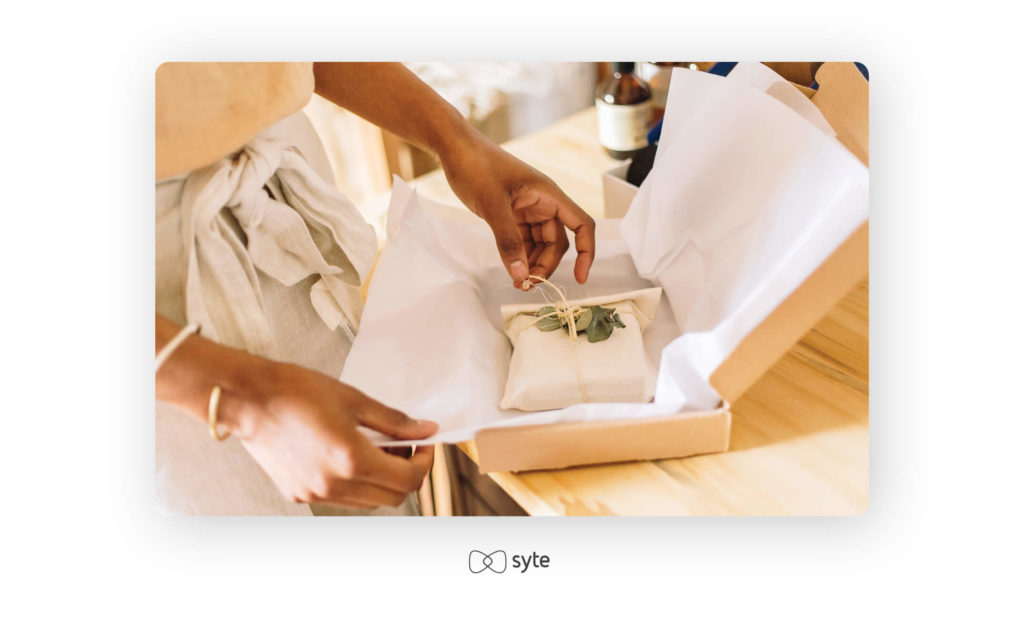
- Build a Website
When your first set of products is ready, you’ll need a platform to showcase them. Ideally, this should be your branded website, where you’ll manage everything from browsing to payment and delivery. The accessibility and usability of your site can make or break your business. Details such as design and speed will contribute to your site’s performance; make sure these are optimized, whether you self-host or use a third-party eCommerce platform.
Alternatively, you can list items on marketplaces, which is a go-to for shoppers who want to discover new brands. Some social media sites also allow the publishing of shoppable content. This path to purchase, called social commerce, is booming. Insider Intelligence predicts that sales from social commerce are set to rise by 24.9%, amounting to $45.74 billion by 2022.
- Establish a Social Media Presence
Social media platforms do more than just provide individuals a place for self-expression and documentation. It’s also a proven method for brands to connect to their target audience. Leaving comments and liking is easy, and brands can make a quick impact with a friendly reply or private message. Social media can also be integral to product discovery. Bazaarvoice reports that a third of US consumers rely on social media to find new products. Recommendations can be as simple as tagging friends or collaborating with influencers. About 71% of American shoppers agreed that suggestions from friends and acquaintances influence their decisions when purchasing.
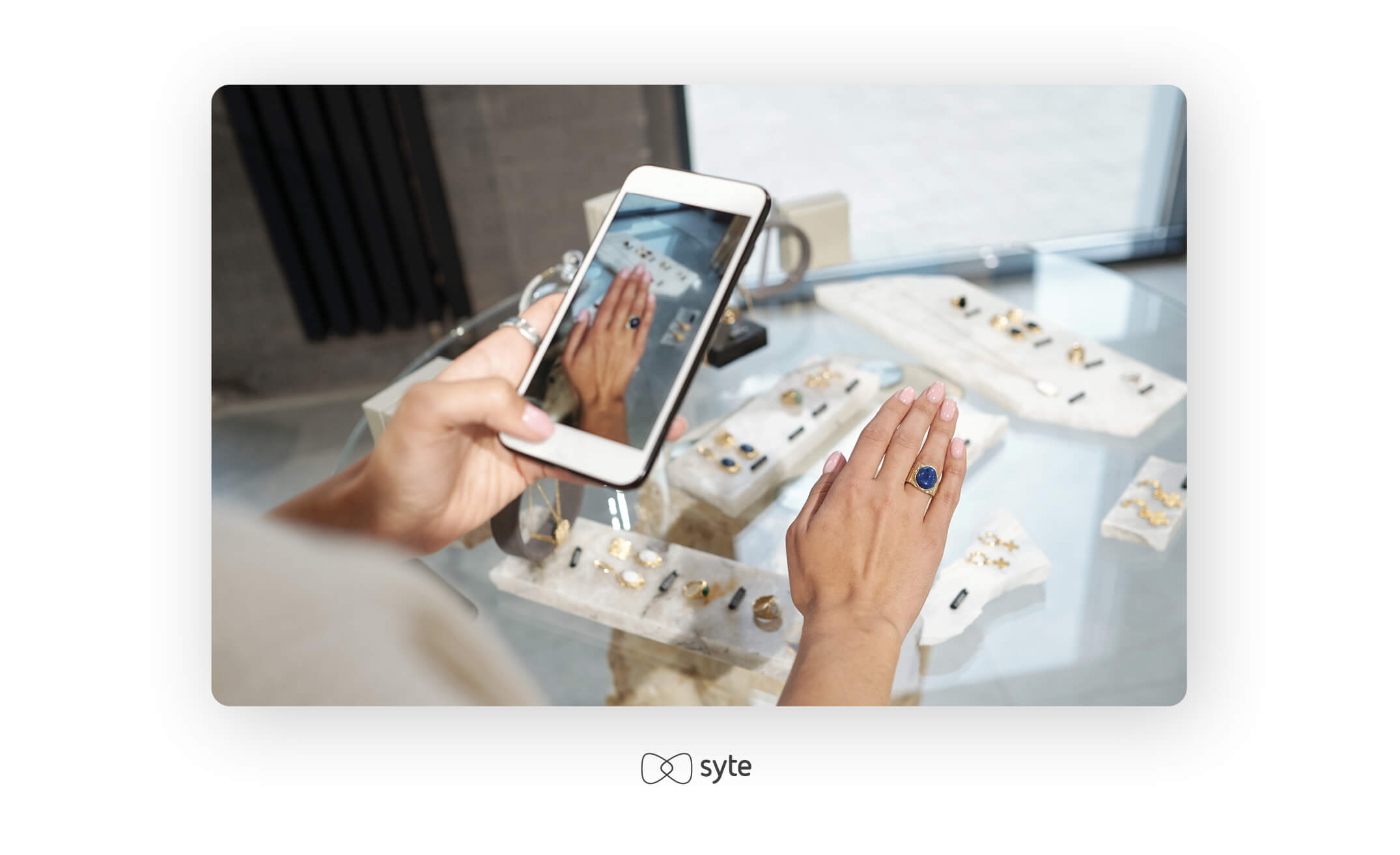
- Craft Your Marketing Strategy
Now you have your products, brand website, and social media handles. The next step is marketing — directing customers to online platforms where they can buy your jewelry. Retailers have nearly endless possibilities to promote brand awareness and attract shoppers, including paid ads, social media, dynamic emails, and SEO. User-generated content is useful to instill trust. Partner with well-known influencers to boost product promotion and community building.
9 Best Practices in Selling Jewelry Online
Now that we have the basics of starting an online jewelry business out of the way, we can discuss how to stand out from the competition and make your mark on the online jewelry .
Create a Story
Most shoppers who purchase their jewelry in person expect the process to be experiential. They imagine themselves spotting the perfect piece, trying it on and seeing it glow under the bright lights, and walking out of the store with a beautifully wrapped package under their arm. You can help recreate this specialized shopping experience online by providing your customers with a story. It could mean digging into your brand’s origins or discussing the meaning behind certain materials in your jewelry. Provide your customers with a memorable narrative they can associate with your products.
Provide Multiple Avenues for Inspiration
Discovering jewelry is hardly a linear process. Customers can be motivated by a piece they saw on TV or social media, their friends’ recommendations, or an accessory worn by a passing stranger. Inspiration can also strike from different sections of your website. You can feature your most popular or trending products on the homepage, make recommendations on product detail pages, link shoppable content on your blogs or gift guides, or upsell when a shopper is about to purchase their items.
Optimize Shopping on Mobile Devices
Mobile devices have become indispensable to everyday living. If you’re not currently reading this on your phone, it’s probably at least within reach, ready to buzz or ping you with the latest notification. Shopping has also become more accessible and frequent, with shoppers turning to their phones to browse products even to just pass the time. A mobile app is a nice-to-have but not necessary for most brands. However, it is crucial that your eCommerce website is optimized for all operating systems, tablets, and mobile devices.
Support Sustainability
Shoppers of the past may have turned a blind eye to retail practices that harm the planet, but the tides are turning. In recent years, more customers have become motivated by sustainability, with a brand’s practices affecting customer loyalty and purchase decisions. By 2025, it’s projected that sustainability-influenced purchases will account for 20-30% of all fine jewelry sales, amounting to as much as $110 billion. Shoppers are not gullible, however, and will see right through superficial statements. They need to see real changes take effect, such as more transparency in the sourcing and supply chain as well as traceability of products.
Prioritize Reliable Customer Service to Establish Trust
The importance of customer service in online retail is heightened because of the lack of in-person assistance. Without a sales clerk present, customers are left to navigate your platform and inventory on their own. Questions are likely to come up, and the speed at which these are addressed can play a part in customer satisfaction and loyalty. Forrester found that consumers are 2.4 times more likely to stay with brands that resolve their issues promptly. This personal assistance can be offered through live chat with a customer representative, automated chatbots, or FAQ pages. Having someone on hand to answer questions can also prevent costly returns and restocks.
Create Content to Establish Your Brand as an Authority
Research is a crucial part of jewelry shopping. To make sure your brand shows up in shoppers’ search results, you can make your website a one-stop shop for customers who need help. Content such as blogs, gift guides, and inspiration galleries can relay the depth of your knowledge in the industry. You can answer pressing questions from jewelry shoppers with evergreen materials. Another useful outcome of establishing your authority is the trust it can inspire from potential customers.
Take Advantage of Social Proof
Reviews from other buyers can put shoppers’ minds at ease when purchasing something as valuable as fine jewelry. Photos and written reviews help customers visualize themselves owning items from your brand. Psychologists also found that when consumers are given two choices with similar ratings, they’ll prefer the item with more reviews, regardless of which promises better quality. Relatable reviews can impart confidence and push shoppers to add to cart.
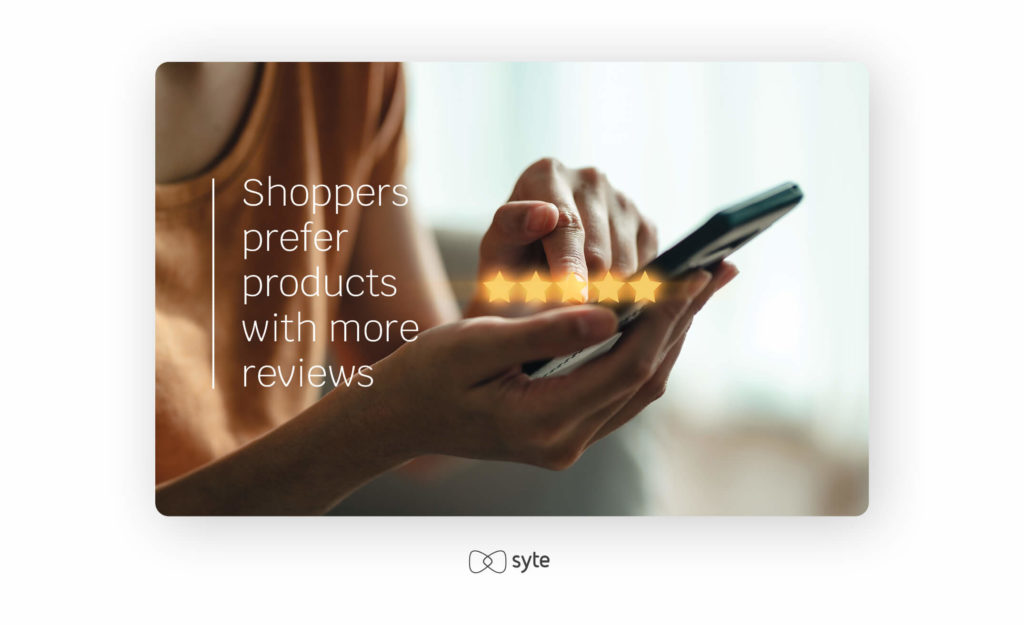
Seamless Omnichannel Experience
While shopping is transactional, brands need to provide the customer journey with a human touch. With businesses operating in multiple channels, it becomes more important than ever to convey care and understanding to shoppers — wherever they are in the customer journey. They may begin their search on the internet, but 80% of sales will still happen in physical stores in 2025. It’s crucial that shoppers feel seamless connectivity between channels, and that the attention and personalization they experience in online stores will still be available offline and vice versa.
Personalize the Customer Journey
Shoppers expect an affinity between them and their preferred brand. One way to demonstrate this is by conveying that you understand your shoppers on a personal level, anticipating and delivering their wants and needs. However, there’s a bit of a disconnect between what brands and customers perceive. Segment reports that while 85% of brands believe that they offer personalized customer experiences, only 60% of consumers agree. This emphasizes the need to define what personalization is and clarify it for businesses. Accurate and relevant personalization is a massive opportunity for brands to win customers.
Elevating Online Jewelry Shopping with eCommerce Technology
Along with exceptional customer experience, trust is paramount to the success of online jewelry brands. Jewelry retailers must work extra hard to deliver buying experiences that build connections, highlight relevance, and inspire confidence to entice modern shoppers.
From conducting research and examining products to sending payment details and completing purchases, here are some eCommerce tools currently used by jewelry brands that make the shopping experience as special as the item purchased.
- Deep product tagging. The concept seems simple, but the function affects many facets of eCommerce: Product discovery, personalization, and merchandising are just among a few of these. With robust tagging, relevant products surface so that shoppers can see them at the right place and time. Moreover, the granular visual attributes made possible if deep product tagging is based on visual AI ensure that customers will not miss items that appeal to their aesthetic — down to the smallest details. (example?)
- Recommendation engines. Product suggestions come in many forms, such as Shop Similar, Shop the Look, and You May Also Like. They can appear in different sections of brand websites including the homepage, product detail pages, and even shopping carts. Through them, shoppers can immediately find jewelry pieces that are either similar or complementary to what they are planning to purchase.
- Augmented reality (AR). Jewelry eCommerce has harnessed the power of AI to make shopping more interactive and engaging. The technology has been used in smart mirrors and AR-based digital fitting rooms that let customers try on pieces virtually. The process is intuitive, requiring only a few clicks or taps. These high-tech components are starting to show up in brick-and-mortar stores, to help shoppers envision wearing certain items and offer personalized recommendations.
- 360-degree product views. Shoppers demand more than just high-quality jewelry photos. They also require immersive, 360-degree product views that allow them to closely inspect jewelry pieces that have piqued their interest. The item can be turned around, seen from multiple angles, and zoomed in so that customers can be confident about what they’re buying online.
- Visual search. Your average jewelry shopper won’t know the difference between Galalith or Bakelite, and they are likely unfamiliar with many jewelry descriptors. Visual search eliminates this gap by allowing customers to upload a photo that captures what they have in mind. Brands save shoppers time from browsing endless results pages and instead, connects them to hyper-relevant items, based on their photos.
- Data analytics. eCommerce is a treasure trove of collected data. This information can be used to generate useful insights to inform your production and inventory management. Making sense of the data can do more than predict future trends. Data analytics also factors in revenue and spending, so businesses can grow at a more desirable and cost-effective pace.
Online Inspiration: 5 Notable Online Jewelers
Distinguishing your jewelry brand as the ultimate destination for jewelry shopping doesn’t happen overnight. It’s the product of effective strategies that foster meaningful brand-customer relations, guarantee issue-free shopping journeys, and boost confidence in committing to a purchase. The internet has so many examples of jewelers who did it right. We’ve included some here for inspiration.
- Chow Sang Sang
Chow Sang Sang is a jewelry retailer with a long history that honors tradition while embracing innovation. The retailer’s large inventory of jewelry gives customers countless options, but they may need help to find what they’re looking for accurately and quickly. The solution? A camera search function that can find similar items within seconds. Visual AI, which powers the tool, also makes it possible for the brand to surface relevant items through the Discovery button and Shop the Look.
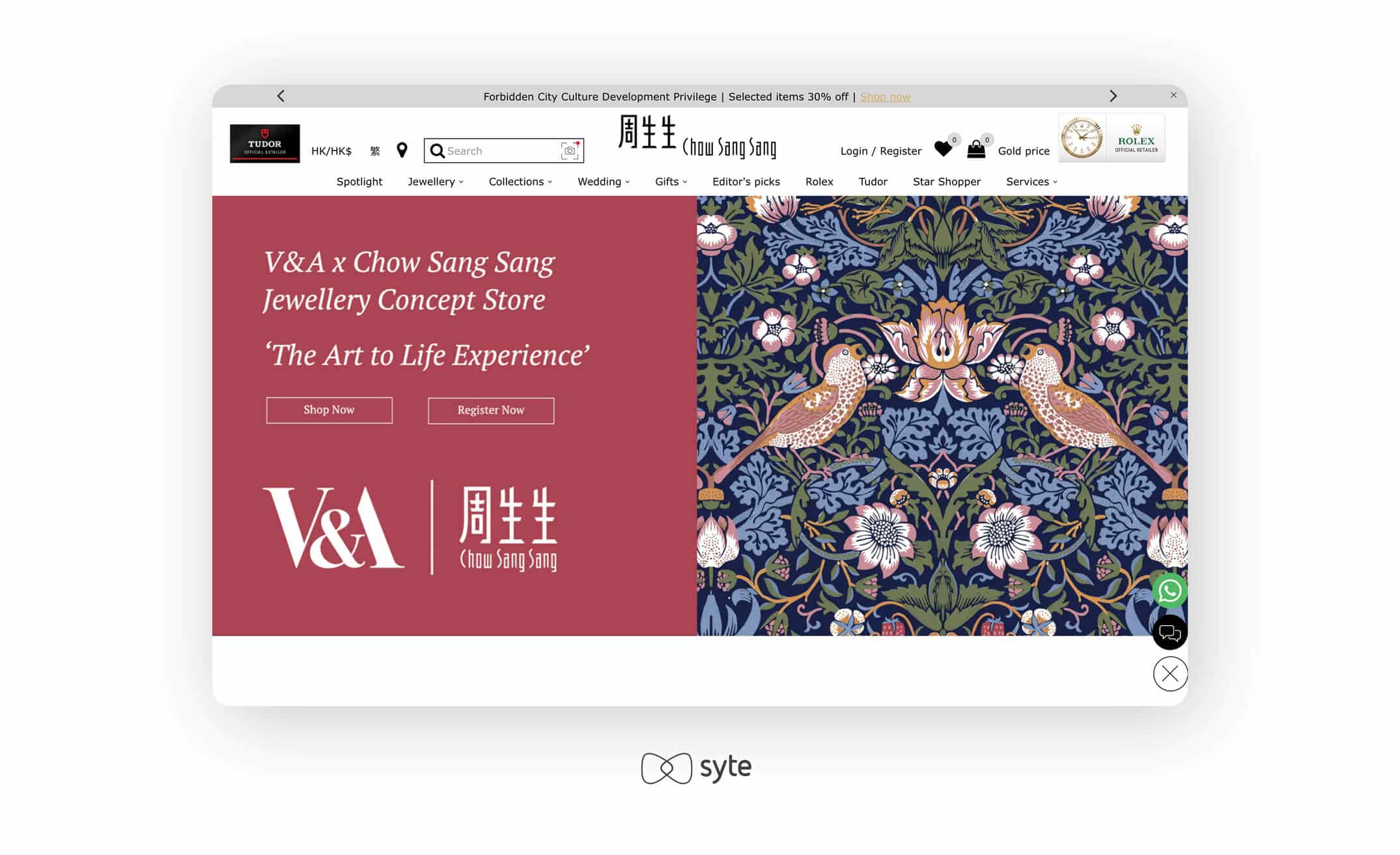
- Ana Luisa
Ana Luisa is a jewelry brand that puts sustainability at the forefront. The carbon and water-neutral designer from New York prominently displays its climate neutral certification badge on its website. Even the brand’s about page provides details about its environmental standards and like-minded partners. Buyers are not shy in expressing their appreciation for the brand: User-generated content from thousands of users attest to the quality of the pieces shown on product pages. Moreover, high-quality videos and product photography add to the website’s appeal and usability.
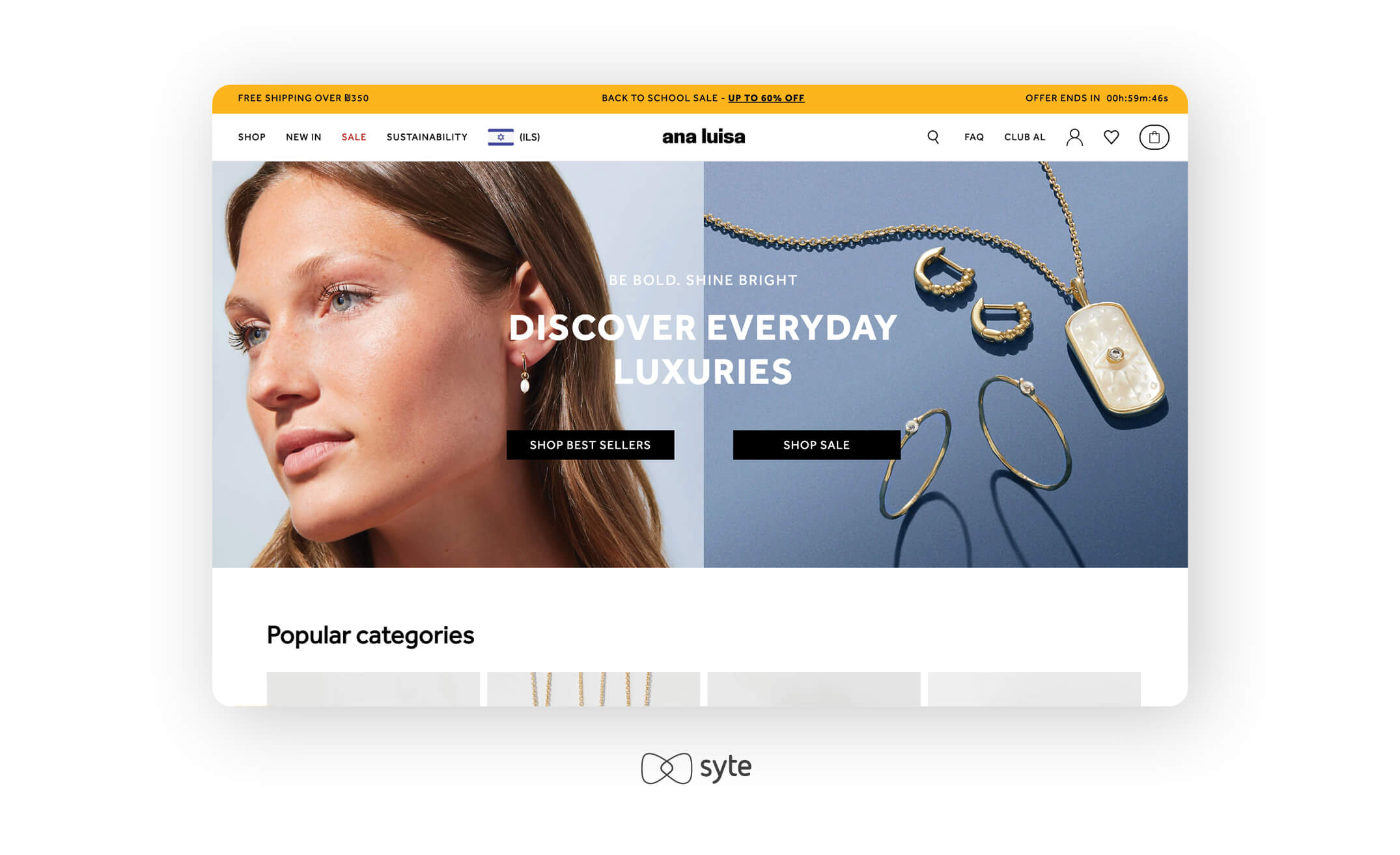
- Revival Jewelry
Revival Jewelry uses proprietary technology to offer truly unique pieces featuring hidden personal photos. Owners can see their photos in the jewelry by holding it an inch away. Revival Jewelry explains how it works in a video showcasing the craft and the feeling of owning a highly customized product.
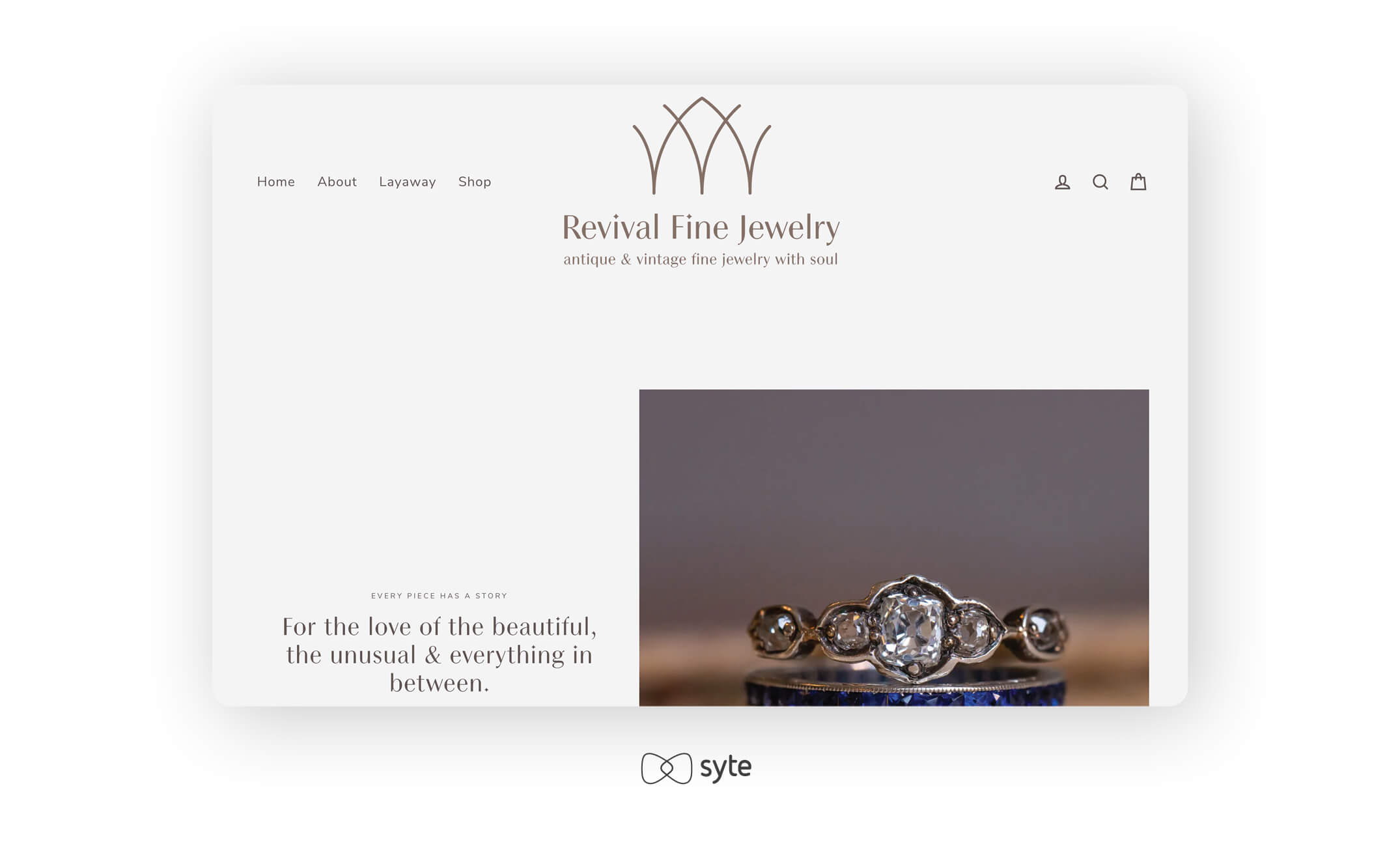
- Brilliant Earth
What sets Brilliant Earth apart is the importance it places on educating shoppers. Its website is filled with interactive tools such as virtual try-on, a 360-degree product view, and a skin tone slider, all of which make customers better informed. A visual detailing the four Cs of diamonds — cut, color, clarity, and carat — is shown on multiple pages. Designing jewelry with the “Create Your Own Diamond Ring” feature incorporates useful information and multiple settings on gemstones, filters, and more.
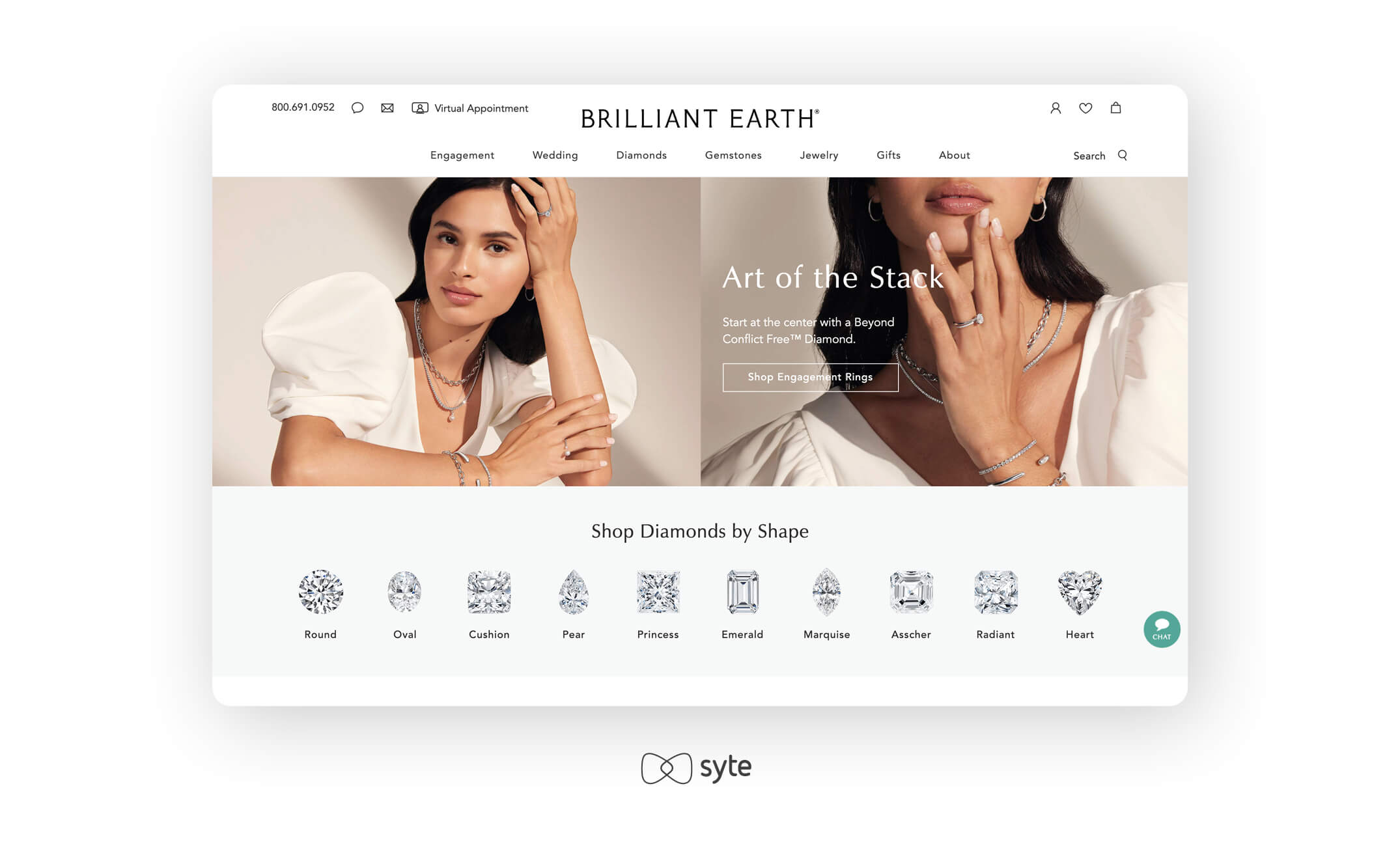
What the Future Holds for Online Jewelry Brands
From building a brand to scaling it, creating a successful online jewelry store depends on three fundamental factors: a well-designed and responsive website, effective marketing strategies, and advanced eCommerce technologies.
By striving to meet consumer expectations every step of the way, brands can engage customers where they are and provide context and justification for emotionally charged jewelry purchases. This transforms online jewelry shopping into less of a transactional activity and more like buying from people you know well.
Putting customers front and center will be especially vital in a world that’s slowly being influenced by the metaverse, the new playground for digital users, especially millennials and zoomers. It’s noteworthy that the virtual world is highly reliant on social connections and self-expression. It’s a place where jewelry can be represented as non-fungible tokens (NFTs), real-life pieces, or both.
The future is ripe for jewelry brands wanting to foster relationships with shoppers and stay ahead of the game — by further personalizing the customer journey across multiple touchpoints, online and offline.